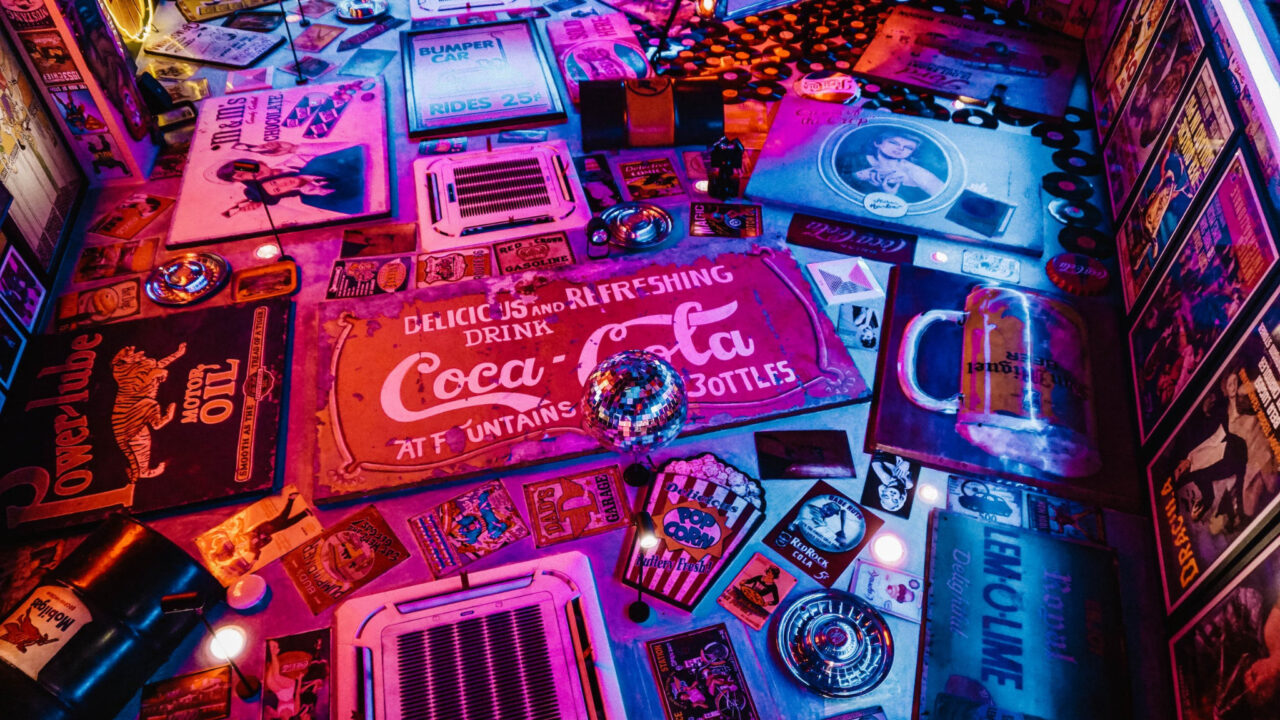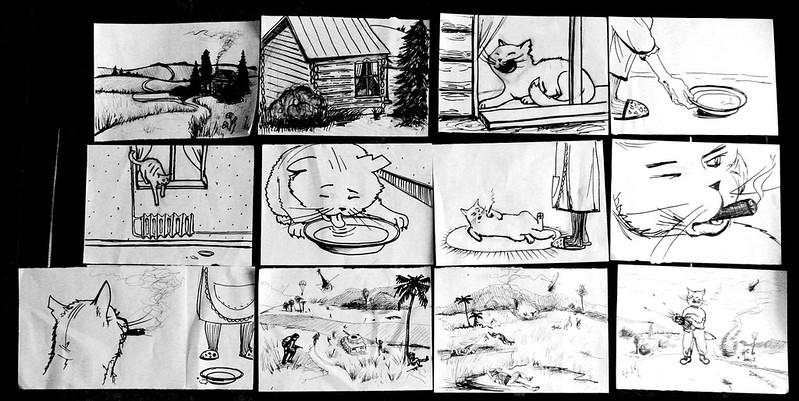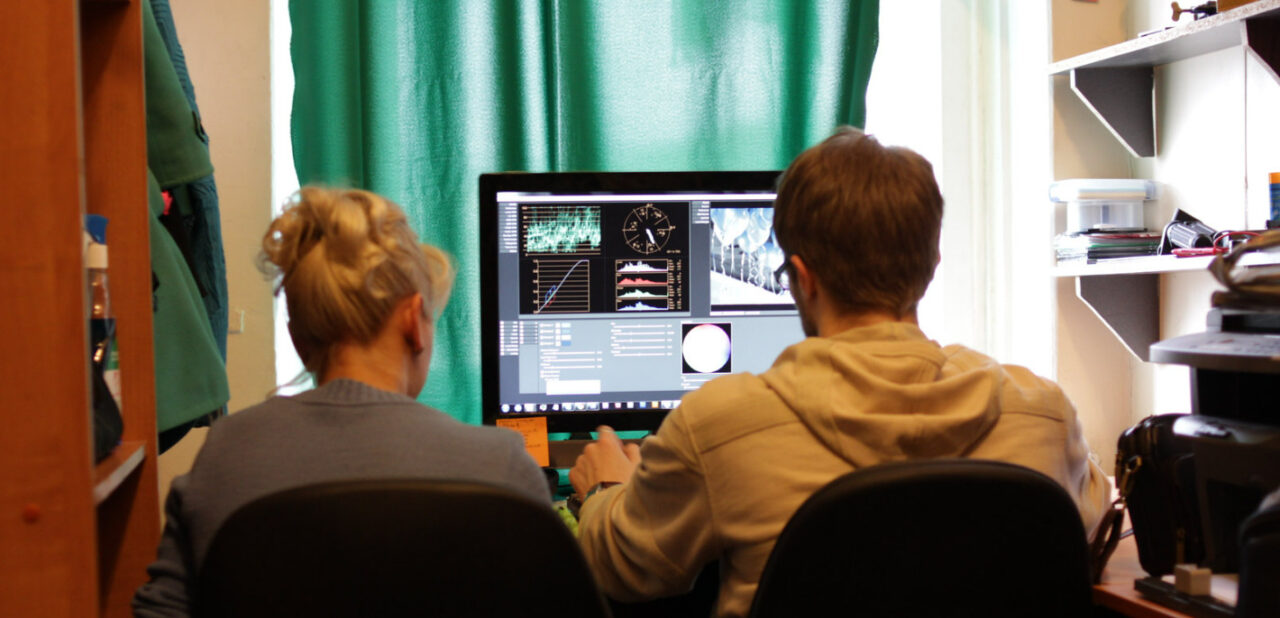Motion graphic design is attractive if you are creative and passionate about design. But how to become a motion graphic designer?
This process mainly requires your ability to self-study and stay updated with trends. So you need to put a lot of effort and dedication into it.
My 10-step guide below will help you know what to do on this career path. Let’s dive into this post for more!
How To Become A Motion Graphic Designer?
To become a motion graphic designer, you need to spend time acquiring knowledge and developing essential skills. Besides, you need relationships that can help you grow in this field.
I’ll break this process into ten steps and walk you through each!
Step 1: Gain Graphic Design Knowledge

First, you need to gain basic knowledge of graphic design. Why? Graphic design helps you learn how to arrange things like colors and shapes so they look pleasing to the eye.
You’ll learn to use fonts and arrange text in a way that’s easy to read and looks great. And understanding colors helps you choose the right ones to give the right feelings in your animations.
As a result, graphic design helps you tell a clear and interesting story through your animations.
In fact, this job does not require you to have a Bachelor’s degree or formal qualifications. So you can self-study from online sources or books.
There are websites with videos and articles that explain how to do graphic design step by step, for example, Adobe, Skillshare, and Coursera.
Step 2: Learn Animation Basics

After learning about graphic design, it’s time for the next step: animation basics. Animation is what makes images move and come alive:
- It adds motion and excitement to your designs and makes them interesting.
- It helps you show stories and feelings through movement. It’s like a mini-movie in your design.
- Animated stuff grabs attention, and people like to interact with moving things.
In this step, dig deep into the following:
- 12 animation principles: These are the fundamental principles that any motion graphic designer needs to know to create more realistic and appealing animations.
- Keyframes: Learn how to set keyframes to define the starting and ending points of an animation.
- Frames per second (FPS): Know how many images should be in a single second of animation.
- Motion paths: Learn how to create paths that elements follow to create more complex animations.
There are some other animation basics that you need to know. But in this step, the above is enough to get you started on this journey. Then you can learn more in the process of practice and work.

Step 3: Learn About Tools and Software
Knowing how to use the tools helps you make cool designs and animations you imagine. They make your work quicker. Also, new software updates have new things to try.
To learn about them, you can start with popular ones like:
- Adobe After Effects: The industry standard for motion graphics and visual effects.
- Premiere Pro: Video editing software often used in combination with After Effects.
- Cinema 4D: Widely used 3D graphics software for creating 3D animations and models.
- Autodesk Maya: Another powerful 3D software for animation, modeling, and rendering.
You can find tutorial videos on YouTube, Udemy, and LinkedIn to practice these tools. These websites have easy lessons to show you how to use them.

Step 4: Consider Formal Education
While self-learning is valuable, formal education can provide structured knowledge, hands-on experience, and industry connections that can accelerate your career.
Formal programs usually give you chances to work on real projects and practice what you learn. Also, they often provide access to software, tools, and facilities that might be pricey to acquire independently.
Where to get a formal education? Look for well-known colleges, universities, and specialized design schools that offer programs in:
- Graphic design
- Animation
- Motion graphics
You must ensure the program covers animation principles, software skills, and other relevant topics. Also, see if the teachers have worked in the industry.
If you attend an on-campus program, check out the facilities, studios, and equipment available to students. No one wants to study in a shabby facility, right?
Don’t forget to see how much it costs and if you can get any scholarship or financial aid options. It might cost money and time, but the skills and knowledge you gain are really worth it in the end!

Step 5: Work On Personal Projects
I always recommend working on personal projects because they provide the freedom to try new ideas, styles, and techniques without any restrictions. They help you sharpen your skills and learn at your own pace.
Besides, the work you create becomes part of your portfolio. This way, you show your versatility to potential clients and employers.
Don’t tackle big projects at the beginning. Instead, you can choose projects that excite you, whether an animation, a logo reveal, or a short video clip.
Remember to define what you want to achieve with each project. It could be learning new software or improving a specific skill.
Then, dedicate time regularly to work on your personal projects. If you encounter challenges, research and learn how to overcome them. It’s a fantastic way to grow.
After finishing, you can post your projects on social media, design communities, or personal websites for feedback and encouragement.
Step 6: Build A Network
Networking lets you connect with other designers. When you know more people in the field, you can share tips and tricks and learn from their experiences. Also, you’re more likely to hear about job openings, freelance gigs, and projects.
Sometimes, your projects need a team effort. So having a network means you can team up with other creative minds.
Moreover, meeting fellow designers keeps you motivated and inspired. You can see what’s new and trendy in motion graphics.

So how to build a network in this field? Based on my experience, here are the most effective ways you can have quality relationships:
- Online presence: Be active on social media platforms like LinkedIn, Instagram, and Twitter.
- Join online groups: Look for motion graphics or design groups online.
- Attend workshops and events: Join workshops, webinars, and events related to motion graphics. You’ll meet pros and fellow enthusiasts there.
- Collaborate: If you admire someone’s work, reach out! You can offer to collaborate on a project or chat about your shared passion.
- Be genuine: When you connect with others, my advice is to show interest in their work and experiences.
- Follow up: After meeting someone, connect on social media and follow up. Remember, keeping in touch maintains your network.
- Stay engaged: Regularly interact with your network, comment on their work, and share interesting things you find.
Networking is about making friends who love what you love: motion graphics. Building these connections can open doors to exciting chances and make your journey as a motion graphic designer even more rewarding.
Step 7: Build A Portfolio
Creating a portfolio is like making an album of your best artwork. It’s a way to show off your cool animations and designs. It lets people see the animation types you like to make and how you differ from others.
Yet, many young people do not know how to create an impressive portfolio. If you also have difficulty in this step, check out my tips below:
- Choose your best stuff: Pick your coolest animations and designs and put them in your portfolio.
- Show different things: Have a mix of animations, motion graphics, and other designs to show you can do lots of stuff.
- Group similar stuff: Put similar things together, like all the 3D animations in one place and logo animations in another.
- Explain your work: Write a little about each thing you put in your portfolio to explain what you did and how you did it.
- Use a website: Make a website where you can put your portfolio. Or you can use sites like Dribbble or Behance.
- Create a showreel: Craft a short video highlighting your best animations and keep it engaging and under 2 minutes.
After having a portfolio, you can try applying to freelancing jobs to test your skills and gain more experience.
Step 8: Look For Internships and Freelancing Jobs
Internships and freelancing let you apply what you’ve learned in real projects, boosting your skills and confidence. Also, you’ll have chances to work with pros and clients. So you can expand your network and make industry contacts.
Moreover, freelancing jobs can help you earn money while honing your skills, even before you have a full-time job.

Here’re where you can look for these jobs:
- Online platforms: Websites like Freelancer, Upwork, and Fiverr have freelance gigs you can apply for.
- Job boards: Check design and creative job boards for internships and freelance opportunities.
- Networking: Let friends, family, and your network know you’re looking for work. They might have leads.
- Emails: Approach companies you admire with a polite email. You can show your skills and express your interest in interning or freelancing.
- Social media: Post your work on Instagram, LinkedIn, and Behance. If someone is interested in your style and skills, they will contact you.
These jobs are like stepping stones to a great motion graphic career. They help you learn, build connections, and show off your talent.
Step 9: Stay Updated With Trends
Keeping up with trends is staying in the loop about the latest cool stuff happening in your creative world. And clients often seek designers who know current trends and can create modern, eye-catching animations.
To stay updated, I recommend following websites like Motionographer and Behance because they show what’s hot in this field.
Also, motion graphic designers and studios on platforms like Instagram, Twitter, and LinkedIn often share their latest work and trends. So you can follow them.

Don’t forget to join workshops and conferences where industry experts discuss trends and share insights. There, you can talk to them to learn about trends they’re excited about.
Another tip is to look at commercials, music videos, and ads to see what’s in demand and understand current trends.
Step 10: Seek Jobs
When you feel confident with your knowledge and skills, you can apply for the position of motion graphic designer.
Like when you find internships and freelancing jobs, you can search for this position on Indeed, LinkedIn, and specialized creative job boards list motion graphic job openings.
Yet, the requirements for the official position will be more difficult than when you are applying for internships or freelancing jobs. Thus, read these requirements carefully to see if it fits your skills.
If you’re called for an interview, remember to research the company and practice discussing your skills and experiences. This way, you’ll have a good interview and be more likely to get this job.
What Does A Motion Graphic Designer Do?
As a motion graphic designer, my job is all about making things move on screens to tell stories, including:
- Brainstorm and create ideas for fun and interesting ways to show animations and graphics on videos or websites.
- Create pictures and graphics using software like Adobe Illustrator and Photoshop.
- Add movement to these pictures.
- Design captivating titles and intros for videos.
- Design UI for apps and websites.
- Add special effects to the video, for example, sparkles or explosions
- Team up with others, like illustrators and sound experts.
- Talk to clients to know their vision, provide updates, and ensure their needs are met.
- Fix any issues that pop up.
In short, my role as a motion graphic designer is to transform static images into dynamic, engaging experiences that captivate audiences and tell stories through the art of movement.
FAQs
How Long Does It Take To Become A Motion Graphic Designer?
Becoming proficient in motion graphic design can take 1 to 3 years of focused learning and practice. It varies based on your starting skills, dedication, and the complexity of the projects you aim to handle.
If you pursue formal education, the time will be longer. But in return, you will stand out from the self-taught candidates.
How Much Can A Motion Graphic Designer Make?
In 2023, the average annual income of a motion graphic designer is $87,370, while those with experience working in senior positions can earn up to $136,244 per year.
Is Motion Graphic Design A Good Job?
Yes. This job offers creative expression, a chance to work on diverse projects, and good income potential in advertising, film, and entertainment.
What Is The Most Important Skill Of A Motion Graphic Designer?
Creativity is the core skill. You must visualize and execute captivating animations. Also, strong skills in designer software and tools are crucial for success.
Conclusion
My guide on how to become a motion graphic designer above has given you all the essentials you should focus on in this process.
After acquiring the knowledge, skills, and experience I mentioned, you will surely be able to impress any employer.
I believe that you’ll get your desired job if you persevere to the end. Good luck!
